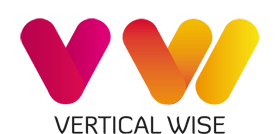How can nonprofits make a greater impact in a digital-first world? A well-crafted website is the cornerstone of success, serving as a hub for fundraising, volunteer recruitment, event promotion, and raising awareness.
In today’s landscape, a user-friendly, professional site is no longer optional, it’s essential. Yet, tight budgets often make custom-built options out of reach, leaving nonprofits to seek smarter, more affordable solutions for their online presence.
The Critical Role of an Online Presence for Nonprofits
A strong digital presence is vital for nonprofits to amplify their impact and achieve their goals. Website builders offer a budget-friendly way to create professional, mission-driven websites without requiring technical expertise. By choosing the best website builders for nonprofits, organizations can access tools like donation integration, volunteer sign-ups, and customizable templates. This guide outlines five essential steps to help nonprofits select the perfect platform to support their mission.
Step 1: Define Your Nonprofit’s Objectives and Needs
Before diving into the options, it’s essential to identify what your nonprofit wants to achieve through its website.
Key Goals
Determine your website’s primary purpose. Are you aiming to raise funds, recruit volunteers, or promote events? Nonprofits often juggle multiple objectives, so it’s crucial to prioritize. For instance, if fundraising is your main goal, your website must prominently feature easy-to-use donation forms and transparent financial reports to build donor trust.
Must-Have Features
Your nonprofit mission will heavily influence the kind of features your website requires to achieve its goals. As a minimum, the site needs to have donation integration so donors can give safely and conveniently through secure payment methods for one-time and recurring contributions to make it easy to donate to your cause. Volunteer sign-ups are equally important since they make it easy for people to get involved by providing simplified forms that capture essential information quickly and efficiently.
Additionally, accessibility compliance is vital for inclusivity, featuring tools like alt text for images, keyboard navigation, and compatibility with screen readers. These elements collectively ensure your website is welcoming, functional, and aligned with your nonprofit’s mission.
Customization Requirements
Your nonprofit is unique, and your website should reflect that. Customization options such as brand-specific color schemes, personalized fonts, and content layouts are crucial. Avoid generic templates that don’t align with your organization’s identity. A website that mirrors your nonprofit’s core values fosters trust and resonates with your audience.
By defining your needs upfront, you’ll have a clear framework to evaluate different website builders and identify platforms that meet your objectives.
Step 2: Research Nonprofit-Friendly Features
Once your goals are clear, the next step is to research the features offered by various website builders. Not all platforms are created equal, and nonprofits have unique requirements that go beyond basic website functionality.
Specialized Tools for Nonprofits
Many website builders cater specifically to nonprofits, providing tools that simplify mission-driven activities. Features such as donation buttons, event management systems, and email marketing integrations are particularly valuable. For example, platforms like Wix and Squarespace include built-in tools to streamline fundraising efforts and track donor activity.
Accessibility
Your website design should be inclusive. Find builders that emphasize accessibility, making sure your site is usable by all people, including those with disabilities. Features such as screen reader compatibility, clear navigation menus, and color contrast options make a big difference.
Evaluating Popular Platforms
Top website builders, Wix, WordPress, and Squarespace, stand out for their nonprofit-focused features. Wix stands out for offering intuitive drag-and-drop tools, WordPress for offering unparalleled flexibility with customizable plugins, and Squarespace is great at having sleek templates that speak to professionalism and a clear mission.
With a range of nonprofit-friendly features to explore, thorough research will help you identify the best tools to amplify your impact.
Step 3: Compare Pricing and Budget Options
Budget constraints are a common challenge for nonprofits, making it vital to find a platform that balances affordability with robust features.
Affordable Pricing Plans
Website builders often offer special pricing or discounts for nonprofits. Wix, for example, provides a Premium Plan discount tailored to charitable organizations. WordPress offers affordable plans with extensive plugin support, and Squarespace delivers value through all-in-one pricing that includes hosting.
Balancing Features and Cost
It’s important to weigh the features provided against their cost. While advanced functionalities like custom domain hosting and detailed analytics are beneficial, you don’t need to overspend on features that may not align with your immediate needs. Consider starting with a basic plan and upgrading as your nonprofit grows.
Step 4: Prioritize User-Friendly Interfaces and Support
The best website builder is one that simplifies the web design process for non-technical users.
Ease of Use
This type of drag-and-drop interface is incredibly useful to a nonprofit that doesn’t have any technical know-how. Builders like Wix and Squarespace offer intuitive tools that allow anyone to design a website without any coding knowledge.
24/7 Customer Support
Nonprofits typically work on tight timetables, so there should be reliable customer support. Live chat, email support, or community forums can save a great deal of time and frustration when building the site.
User Reviews and Testimonials
Before committing to a platform, read user reviews to gauge its reliability and ease of use. Positive feedback from other nonprofits can provide valuable insights into potential challenges and benefits.
A user-friendly interface ensures your team can manage the website efficiently, allowing you to focus on your mission.
Step 5: Test and Evaluate Before Launch
Testing is the final step in choosing the right website builder.
Trial Runs and Feedback
Take advantage of free trials or demos offered by website builders to test their tools and templates. Invite team members and volunteers to navigate the website and provide feedback. This collaborative approach helps identify areas for improvement.
Refining User Experience
Based on feedback, tweak the website’s design, navigation, and content. Ensure that the donation process is straightforward, the volunteer sign-up form is functional, and the event pages are clear and engaging.
Optimizing Performance
Remember that 55% of users would leave a website within 15 seconds if it is either not user-friendly or visually attractive. Optimize loading speed, simplify navigation, and use compelling visuals to keep visitors engaged.
FAQs
- What features should small nonprofits look for in a website builder?
Small nonprofits often benefit from website builders that are cost-effective, easy to use, and equipped with features like drag-and-drop interfaces, event management, and fundraising tools.
- Can I integrate fundraising tools with any website builder?
Most modern website builders support integrations with tools like PayPal, Keela, and Stripe, allowing nonprofits to accept donations seamlessly.
- How important is SEO for nonprofit websites?
Online visibility depends on SEO. Built-in features in WordPress and Wix provide tools for optimizing your site with search engines, so your nonprofit can reach a wider audience. In this manner, SEO is important for nonprofit websites.
Conclusion
Choosing a nonprofit website builder should be assessed based on the goals, timelines, and audience of the project. Define the requirements, research nonprofit-optimized traits, and compare pricing plans. Identify user-friendly platforms that should have reliable support and do not skip the beta testing phase of the launch. A well-designed website speaks for a nonprofit; it makes the institution even its purposes better known and more powerful. Start the journey today by turning this site into a mighty vehicle for doing good.








